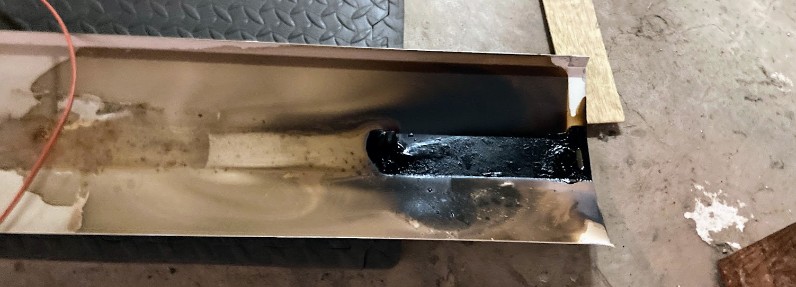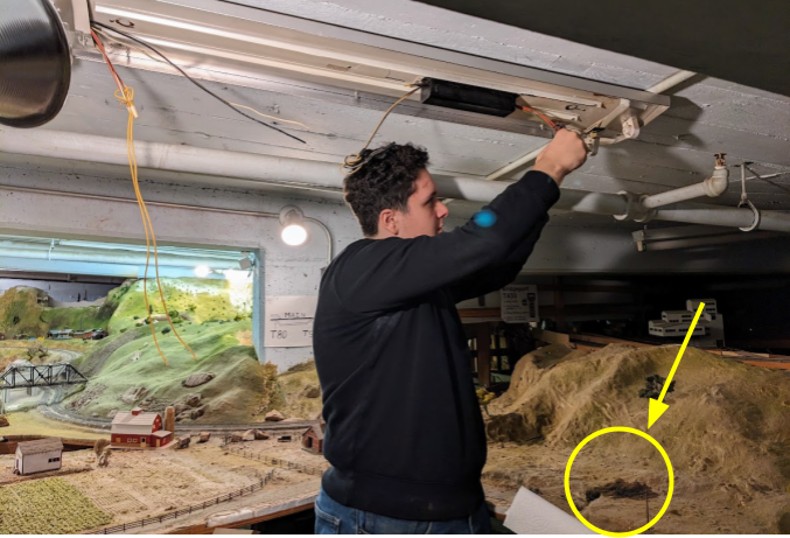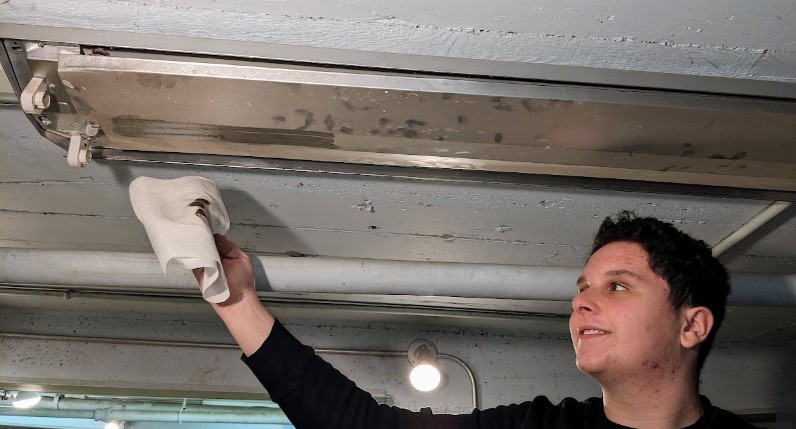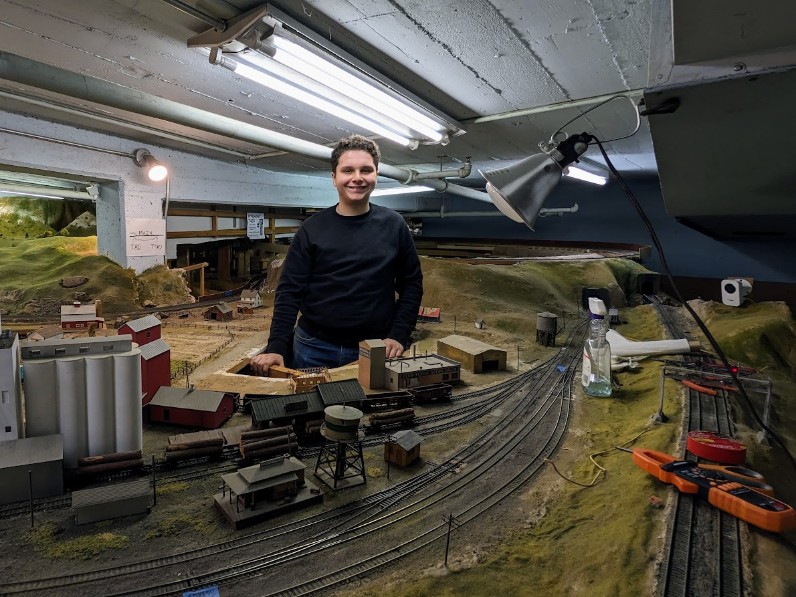The Randall Museum in San Francisco hosts a large HO-scale model model railroad. Created by the Golden Gate Model Railroad Club starting in 1961, the layout was donated to the Museum in 2015. Since then I have started automatizing trains running on the layout. I am also the model railroad maintainer. This blog describes various updates on the Randall project and I maintain a separate blog for all my electronics not directly related to Randall.
2023-11-11 - Maintenance: Overhead Light for Lodi
Category RandallToday, the museum was closed to honor Veterans Day. This was a great opportunity for Orion and I to tackle the task of updating the overhead fluorescent light from Lodi that has been dead for quite a while. My picture archives show the overhead light working back in 2015 and dead in 2017, after the museum renovation. We tried several times to change the fluorescent tubes for either “legacy” ones or LED, and none worked, thus leading me to believe that the ballast had died.
The goal was simply to open the fixture, with the power off of course, remove the ballast, and rewire the fixture for Direct Wire and install new LED tubes. Orion wanted to do all the work for learning purposes. So I had him practice the task on another similar fixture I had removed from Napa a few months ago. It’s easier to learn with the fixture on a bench than working overhead.
The replacement LED tubes I got are GE Direct Wire Color Select 32-Watt EQ T8. They exist in both Type A/B (Direct Wire + Ballast), or Type B only (only Direct Wire). Interestingly, these have a little physical switch which allows to set them for either 4000K, 5000K, or 6500K.
Before starting, we turned the power off at the wall switches and turned off the associated circuit breaker at the panel in the room.
We first cleared the area a bit, to have some place to work:
These overhead fluorescent lights fixtures are fairly simple. The cover is simply held in place with two tabs, making it easy to remove. Once we did that, we got a somewhat nasty surprise:
All that black gunk on the bottom cover is actually the dielectric insulator “oil” from the ballast. Turns out that one had badly leaked. It’s worth noting that the roof is slanted (we’re under the museum’s theater), and thus the light fixture is not flat, which explains why it had only leaked in one direction. We even found some of it on the layout below:
Even though we had turned off power at the circuit breaker, I showed Orion how to do a live wire check using my NCV (non-contact voltmeter). He compared the voltage of the fixture we were going to work with versus one of the working spotlights which are on a different circuit, thus making sure he was working on a dead circuit.
The ballast is otherwise easy to remove on these. Cut the wires, unscrew two nuts to unscrew, and slide it off.
Rewiring the fixture on these is actually very easy:
Following the “documentation” on the LED tubes box, all the tombstones from one side must be connected to the Hot wire, and all the tombstones from the other side must be connected to the Neutral wire. I had Orion use Wago 221 electrical connectors, which are UL and NEC approved, and are perfect for this application. When we practiced on the bench, I showed Orion how to strip the wires at the proper length based on the marking on the Wago connector, and clearly indicated the need to do a pull test to ensure the wires are well seated. That took care of the “rewiring the fixture” part.
Orion then reinstalled the cover. Since the one we removed had all the ballast gunk on it, we reused the one from Napa which was cleaner on the inside. He then had the good idea of cleaning it:
Here’s the end result, with some much needed light at Lodi:
We played with the color temperature switch on the LED tube. They have choices for 4000K, 5000K, or 6500K. As I expected, 4000K was my preference. The nearby fluorescent tubes are listed as 4100K.
Since the ballast we removed is likely pre-1980, it likely contains Polychlorinated Biphenyl (a.k.a. PCBs), a useful yet ultimately proven extremely nasty chemical which has been banned since the 80s. That means we cannot just throw the old cover, ballast, and all the tainted paper towels in the trash. Right now they are just stored under the layout. I need to label them, then I need to work with the museum on how to dispose of them properly.
I pointed out to Orion that some of the nearby fluorescent lights, some of which we replaced with new tubes only a few months ago, already show signs of weakness -- the end of the tubes are getting black. That denotes a bad ballast, in my experience. I think we should continue converting the bad ones as the tubes go dark to Direct Wire LED, and just use regular fluorescent tubes for the ones which have a good ballast (and thus need less replacing).





